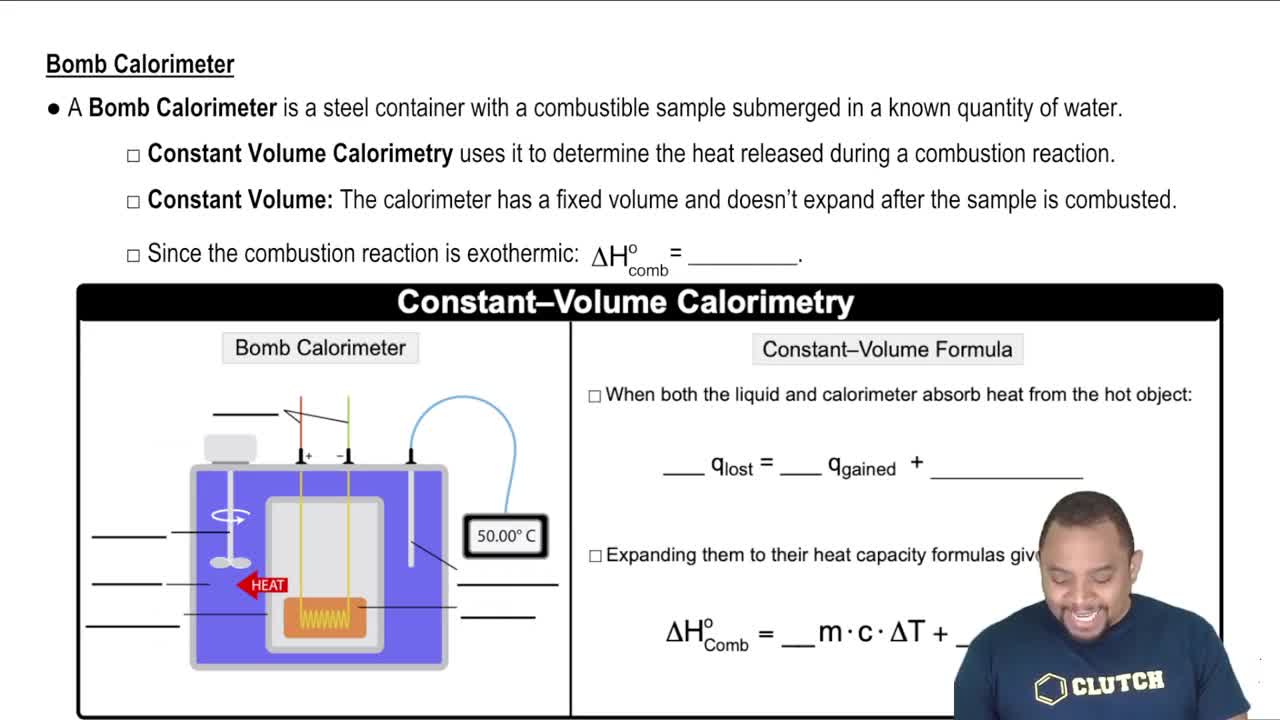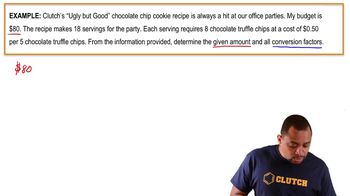(d) In March 1989, the Exxon Valdez ran aground and spilled 240,000 barrels of crude petroleum off the coast of Alaska. One barrel of petroleum is equal to 42 gal. How many liters of petroleum were spilled?
Ch.1 - Introduction: Matter, Energy, and Measurement
Chapter 1, Problem 63
Gold can be hammered into extremely thin sheets called gold leaf. An architect wants to cover a 30 m x 25 m ceiling with gold leaf that is twelve-millionths of a centimeter thick. The density of gold is 19.32 g/cm3, and gold costs $1654 per troy ounce (1 troy ounce = 31.1034768 g). How much will it cost the architect to buy the necessary gold?
 Verified step by step guidance
Verified step by step guidance1
Calculate the volume of gold needed by multiplying the area of the ceiling by the thickness of the gold leaf. Use the formula: \( \text{Volume} = \text{Area} \times \text{Thickness} \).
Convert the volume from cubic centimeters to cubic meters, if necessary, to match the units of the area and thickness.
Use the density of gold to find the mass of gold required. Use the formula: \( \text{Mass} = \text{Density} \times \text{Volume} \).
Convert the mass of gold from grams to troy ounces using the conversion factor: 1 troy ounce = 31.1034768 g.
Calculate the cost by multiplying the number of troy ounces by the cost per troy ounce ($1654).

Verified video answer for a similar problem:
This video solution was recommended by our tutors as helpful for the problem above.
Video duration:
3mWas this helpful?
Key Concepts
Here are the essential concepts you must grasp in order to answer the question correctly.
Volume and Thickness Calculation
To determine the amount of gold needed, one must calculate the volume of gold leaf required to cover the ceiling. This involves multiplying the area of the ceiling (30 m x 25 m) by the thickness of the gold leaf, converted into centimeters. Understanding how to manipulate units and perform volume calculations is essential for solving the problem.
Recommended video:
Guided course

Constant-Volume Calorimetry
Density and Mass Relationship
Density is defined as mass per unit volume, and it plays a crucial role in converting the calculated volume of gold leaf into mass. The density of gold (19.32 g/cm³) allows us to find the mass by multiplying the volume by the density. This relationship is fundamental in determining how much gold is needed in grams before converting it to troy ounces for cost calculation.
Recommended video:
Guided course

Density Concepts
Cost Calculation and Unit Conversion
Once the mass of gold is determined, the next step is to calculate the cost based on the price per troy ounce. This requires converting grams to troy ounces using the conversion factor (1 troy ounce = 31.1034768 g). Understanding how to perform these conversions and apply the cost per unit is essential for arriving at the final cost for the architect.
Recommended video:
Guided course

Conversion Factors Example
Related Practice
Textbook Question
4
views
Textbook Question
The density of air at ordinary atmospheric pressure and25 C is 1.19 g/L. What is the mass, in kilograms, of the air ina room that measures 4.5 m * 5.0 m * 2.5 m?
3
views
Textbook Question
A copper refinery produces a copper ingot weighing 70 kg. If the copper is drawn into wire whose diameter is 7.50 mm, how many meters of copper can be obtained from the ingot? The density of copper is 8.94 g/cm3. (Assume that the wire is a cylinder whose volume V = πr2h, where r is its radius and h is its height or length.)
Textbook Question
Classify each of the following as a pure substance, a solution, or a heterogeneous mixture: (a) a leaf (b) a 999 gold bar
109
views
Textbook Question
Classify each of the following as a pure substance, a solution, or a heterogeneous mixture: (c) stainless steel.
27
views
